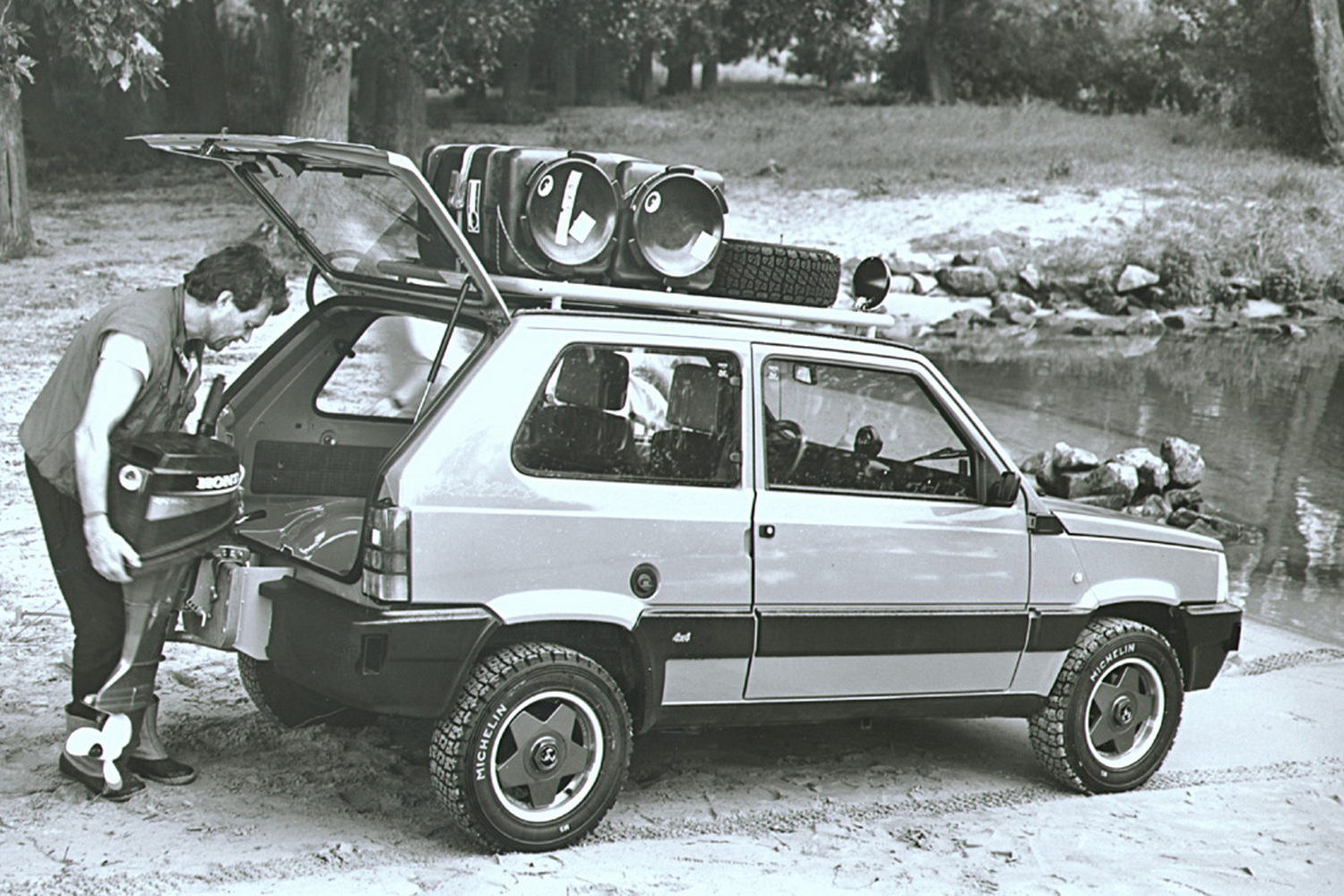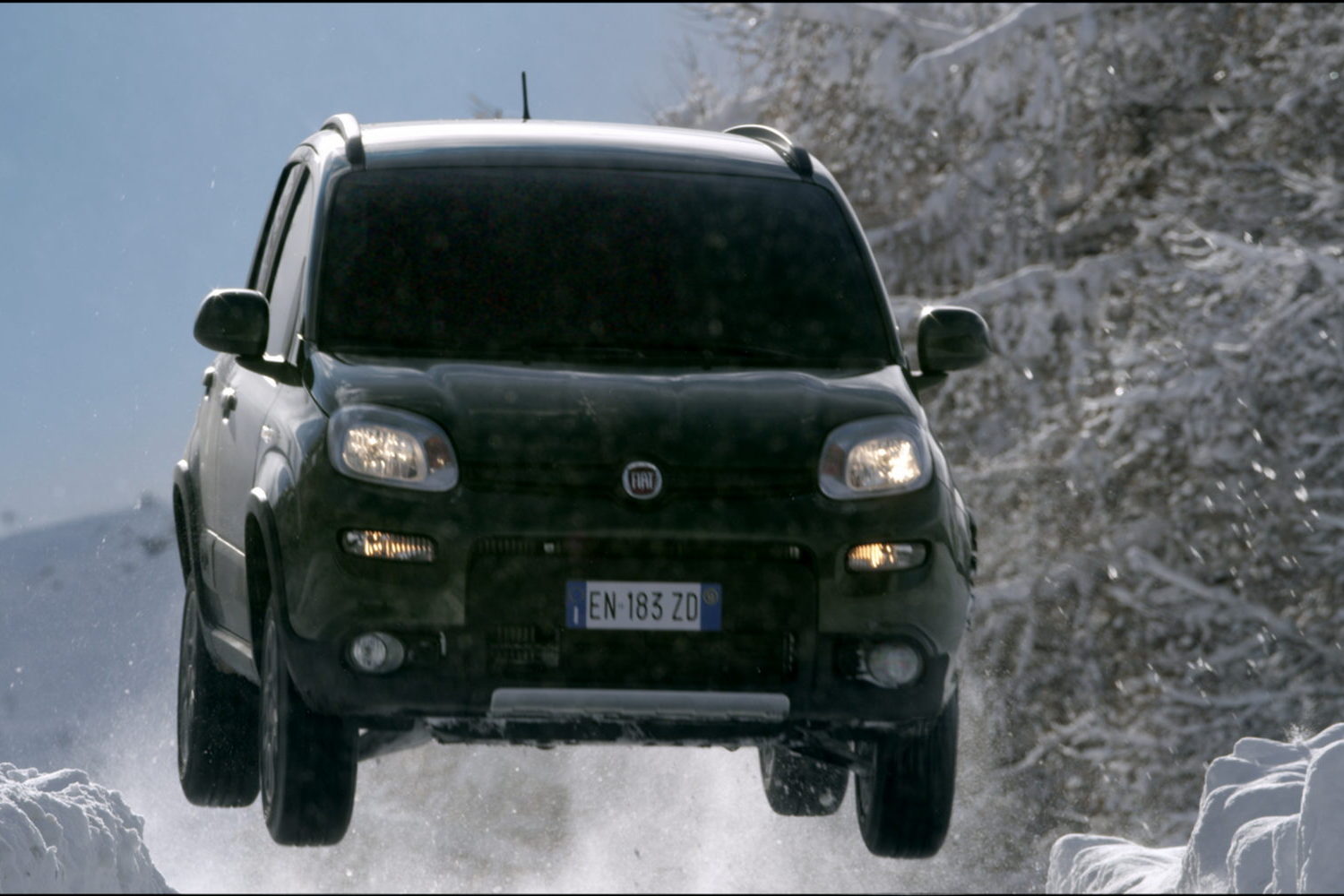Note: This article was written as part of a commercial content partnership between CompleteCar.ie and Gowan Auto.
In the wild, the life expectancy of a Panda is about 15-20 years. Those in captivity can live for more than 30 years, but hitting 40 is an achievement no Panda is known to have managed. Except this one. The Panda 4x4 is arguably the definitive Panda (well, the definitive Fiat Panda, anyway), offering its own take on the adorable, rough-and-tumble thrills and spills for which its four-legged namesakes have become internet sensations.

And like those, it seems the chances of the Panda 4x4 ever making its half century are slim indeed. With a new, reinvented, electric-only Panda expected to arrive in the next year or so, the 4x4's future is somewhat less certain. In fact, given Fiat's parent company, Stellantis, has no small electric cars with all-wheel-drive in its portfolio - not even the Jeep Avenger - and an all-wheel-drive electric vehicle (EV) would normally require two motors and therefore a high power output, the Panda 4x4 is looking very endangered indeed.
Genesis. Not the band...
Were this existing Panda 4x4 to be the last of its breed, it would call time on a story that started in 1983, when Fiat decided to follow the success of the regular Panda - which had been launched three years earlier - with a more capable off-road version. But while the idea may have been Italian, the engineering was, in fact, Austrian. Aiming to combine technology, capability and affordability, Fiat enlisted the help of Steyr-Puch.

Tasked with giving the Panda some proper off-road credentials, Steyr came up with a "simple and robust" method of sending power to the rear wheels. Instead of using a centre differential, Steyr simply called upon drivers to pull a lever, thus connecting the rear wheels to the transmission and creating a conventional four-wheel-drive system. However, drivers were told only to use the system on low-grip surfaces and at low speeds.
But that agricultural all-wheel-drive system wasn't the only thing that set the Panda 4x4 apart. It came with its own five-speed manual gearbox, which was also made in Austria, giving the car shorter gear ratios with which to climb steep inclines and to help with engine braking on downslopes. There was slightly different bodywork, too, with protective strips on the lower body and around the wheel arches, as well as all-terrain tyres and raised suspension, giving the car 18cm of ground clearance. That's almost as much as you get from a modern family SUV.

So capable was the Steyr-engineered Panda that it tackled a host of global overland adventures, including the Safariland tours for amateur drivers. In 1985, some 50 Panda 4x4s took part in this African race, heading from Rome to Abidjan via Tunis - a journey of around 14,000km, many of which were on Saharan desert roads. In the spring of 1985, the car travelled the entire length of the Silk Road, from Venice to Beijing.
Take Two
The 1980 Panda was so successful that it soldiered on until 2003, albeit after a handful of refreshes to keep things vaguely up to date. By that point, the 4x4 Trekking was the sole all-wheel-drive model to make it to the bitter end. But while a 20-year history would have been admirable enough - particularly for one sole generation of Panda - the 4x4 story still had another two decades to run. The next chapter arrived in 2004, built in Poland with a much more modern body and a fresher front end, dragging the car into the 21st Century while keeping its charm and personality.
Things were modernised under the skin, too, with a new and moderately more sophisticated all-wheel-drive system, which would detect a loss of traction at the front wheels, then transfer power to the rear axle as necessary. Not only did this negate the need for the driver to intervene, but it allowed the car to operate with the efficiency of a front-wheel-drive car under normal conditions.
But the all-terrain capability remained. In 2005, Italian aviator Angelo D'Arrigo's team took two Panda 4x4s from Kathmandu to Everest Base Camp, more than 5,000 metres above sea level. The feat was extraordinary enough, but with low-quality Nepalese fuel and altitude, as well as the Panda's relatively small engine, it was an impressive achievement.

Third Time's A Charmer
After eight years, the Panda was replaced once again. The design was overhauled - albeit less dramatically - and inspired by something called a "squircle". Essentially a square with rounded corners, it was designed to be a "fun and playful" design that represents "efficiency, robustness, enjoyability and flexibility". Fiat's words, not ours.

Whatever, the new Panda got a more animalistic face, with big doe eyes and a cute, almost anime-inspired nose. Despite that, the 4x4 remained a key part of the range, and new body reinforcement was added to protect the vehicle. It also got a development of the all-wheel-drive system, featuring an electronic locking differential, which would lock wheels of the same axle whenever one or the other began to lose traction. Instead of spinning the wheel without traction uselessly, as would happen with a conventional 'open' differential, the system allows both wheels to turn at the same speed, giving the wheel with traction the chance to make use of it.
But that wasn't the end of development for the third-generation Panda. An unlikely one-off car, dubbed the Panda Monster Truck, was built by Fiat, Mercurio Cinematografica, the set designer Andrea Faini and the Fabio Gementi garage. Based on a Jeep CJ7 4200 platform and equipped with 150cm-diameter tyres, it was a kind of 'big foot' Panda that stood almost four metres tall. Built in just a few weeks and used in a series of commercials, the car is conserved in Turin.

Like their predecessors, more conventional versions of the third-generation Panda also had an appetite for adventure. Featuring in the Dakar rally in 2017, the modified 'PanDakar' Panda 4x4 Cross became the first Fiat derived from a city car to finish the race. In total, the car covered almost 9,000km, including 4,000km of gruelling special stages.

The Next 40 Years
With electric cars taking centre stage in Fiat's plans, the Panda 4x4's future is uncertain to say the least. While there's clearly still demand for such a vehicle, the mechanics of moving to electric power have not yet been worked out. For the time being, therefore, the Panda may return when the third-generation car reaches the end of its 12-year lifespan, but there's no indication of whether the 4x4 will be a part of the line-up.

The word icon is bandied about with reckless abandon, but its use is probably justified in the case of the Panda 4x4. To this day, every generation of Panda 4x4 can be seen regularly in northern Italy, where the narrow mountain roads and the propensity for treacherous winter weather make the Panda a good choice. To lose it from the motoring landscape would not just be a shame for Giacomo, who drives to the local cafe for his morning espresso, but for everyone who wants or needs an affordable, capable method of getting from A to B no matter what the conditions.













